St. Louis Ribs Overview
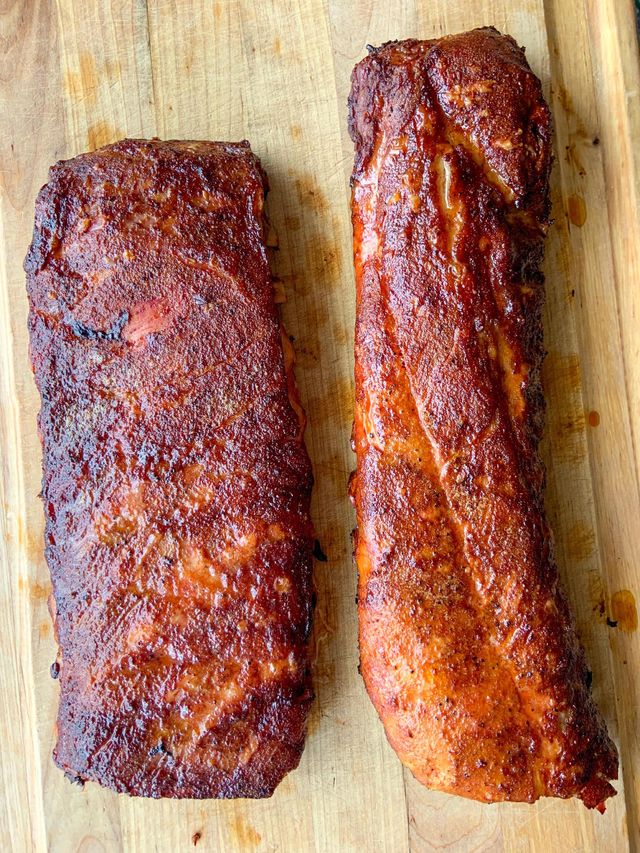
St. Louis Ribs are a popular cut of pork ribs known for their uniform shape and ease of preparation. These ribs are trimmed down from the spare ribs, removing the sternum cartilage and rib tips to create a rectangular shape that cooks and eats well. While they have less meat than baby back ribs, St. Louis Ribs are fattier, resulting in a rich and flavorful taste. Due to their thinner and flatter composition, these ribs also brown more evenly, making them a great choice for beginners.
St. Louis Ribs Definition And Characteristics
St. Louis Ribs are a specific cut of pork ribs that are known for their uniform shape and ease of preparation. These ribs are derived from the spareribs but are trimmed down to remove the sternum cartilage and rib tips, resulting in a rectangular shape. St. Louis Ribs have a moderate amount of meat, which is marbled with fat, giving them a rich and flavorful taste. Their flat and thin composition allows them to brown evenly while cooking, making them an excellent choice for both novice and experienced cooks.
St. Louis Ribs Cooking Methods And Flavor Profile
St. Louis Ribs are incredibly versatile when it comes to cooking methods. They can be cooked low and slow on a smoker or grill, braised in the oven, or even prepared in a slow cooker. The high fat content of St. Louis Ribs makes them ideal for slow cooking methods, allowing the meat to become tender and succulent.
In terms of flavor, St. Louis Ribs have a rich and robust taste. The marbling of fat throughout the meat results in a juicy and flavorful bite. The ribs can be seasoned with a variety of dry rubs or marinades to enhance the taste even further. Whether you prefer a sweet and tangy barbecue sauce or a spicy dry rub, St. Louis Ribs are sure to satisfy your taste buds.
Spare Ribs Overview
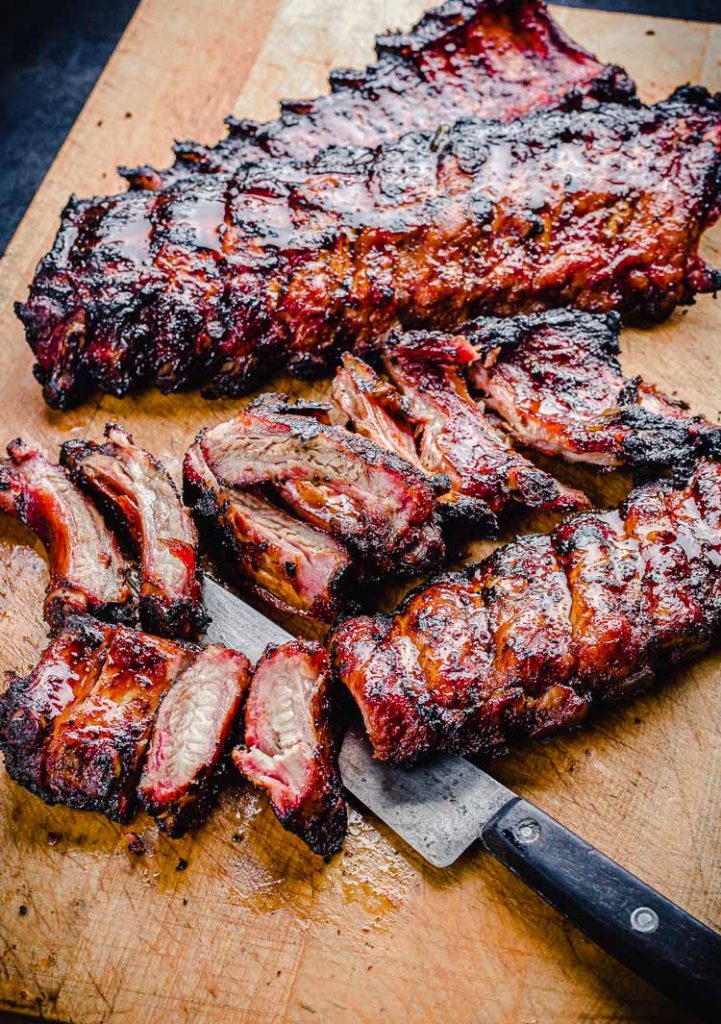
Spare ribs are a popular cut of pork known for their rich flavor and meaty texture. Also known as side ribs or pork spare ribs, they come from the lower portion of the pig’s ribcage. Spare ribs are longer and flatter compared to St. Louis ribs, with more bone and less meat in between. This cut is often preferred by those who enjoy a more substantial and chewy bite. Spare ribs have a slightly higher fat content, which contributes to their delicious and succulent taste. They are cooked using similar methods as St. Louis ribs, but the cooking time may vary due to their larger size and bone structure. They can be grilled, smoked, or even slow-cooked to achieve tender and flavor-packed results.
Spare Ribs Definition And Characteristics
Spare ribs are a cut of pork known for their rich flavor and meaty texture. Also referred to as side ribs or pork spare ribs, they come from the lower portion of the pig’s ribcage. In comparison to St. Louis ribs, spare ribs are longer and flatter, with more bone and less meat in between. They offer a chewier and more substantial bite due to their larger size and higher fat content. Spare ribs can be cooked using various methods, including grilling, smoking, or slow-cooking, to achieve tender and flavorful results.
Spare Ribs Cooking Methods And Flavor Profile
Spare ribs can be cooked using various methods, allowing for a wide range of flavors and textures. They are often grilled, smoked, or slow-cooked to achieve tender and flavorful results. Grilling spare ribs delivers a caramelized crust and smoky flavor, while smoking them imparts a robust and savory taste. Slow-cooking spare ribs in a barbecue sauce or braising them in a flavorful liquid results in tender and moist meat. The high-fat content in spare ribs contributes to their rich and succulent flavor, making them a popular choice for barbecue enthusiasts.
St. Louis Ribs Vs Spare Ribs: Appearance And Size
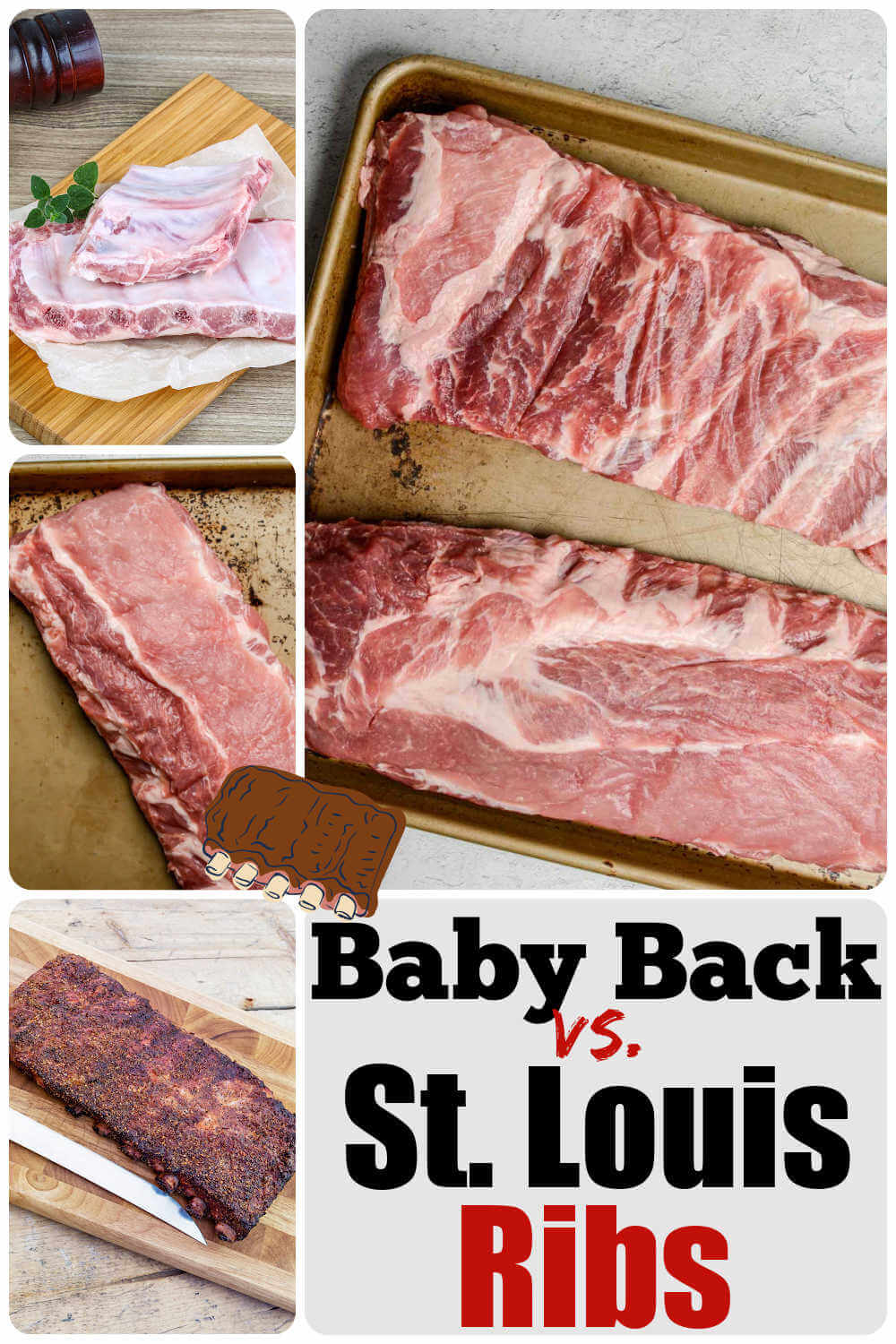
When it comes to appearance and size, St. Louis Ribs and Spare Ribs have notable differences. St. Louis Ribs are trimmed down into a rectangular shape, removing the sternum cartilage and rib tips. This trimming results in a more uniform and attractive appearance. On the other hand, Spare Ribs have a more natural and uneven shape, with the sternum cartilage and rib tips still intact. In terms of size, St. Louis Ribs are generally smaller and lighter compared to Spare Ribs. These differences in appearance and size can impact the cooking process and overall presentation of the ribs.
Comparison Of St. Louis Ribs And Spare Ribs Appearance
St. Louis Ribs and Spare Ribs have distinct differences in their appearance. St. Louis Ribs are trimmed down into a uniform rectangular shape, removing the sternum cartilage and rib tips. This trimming results in a more attractive and appealing presentation. On the other hand, Spare Ribs have a more natural and uneven shape, with the sternum cartilage and rib tips still intact. The uneven shape of Spare Ribs gives them a more rustic and authentic look. These differences in appearance can affect the cooking process and the overall presentation of the ribs.
Difference In Size And Meat Distribution
When comparing St. Louis Ribs and Spare Ribs, there is a difference in size and meat distribution. St. Louis Ribs typically have a more uniform size and shape, as they are trimmed down to a rectangular shape. This trimming process removes the sternum cartilage and rib tips, resulting in a more consistent thickness throughout the rack. On the other hand, Spare Ribs have a more natural and uneven shape, with the sternum cartilage and rib tips still intact. This can lead to variations in thickness and meat distribution across the rack.
St. Louis Ribs Vs Spare Ribs: Flavor And Texture
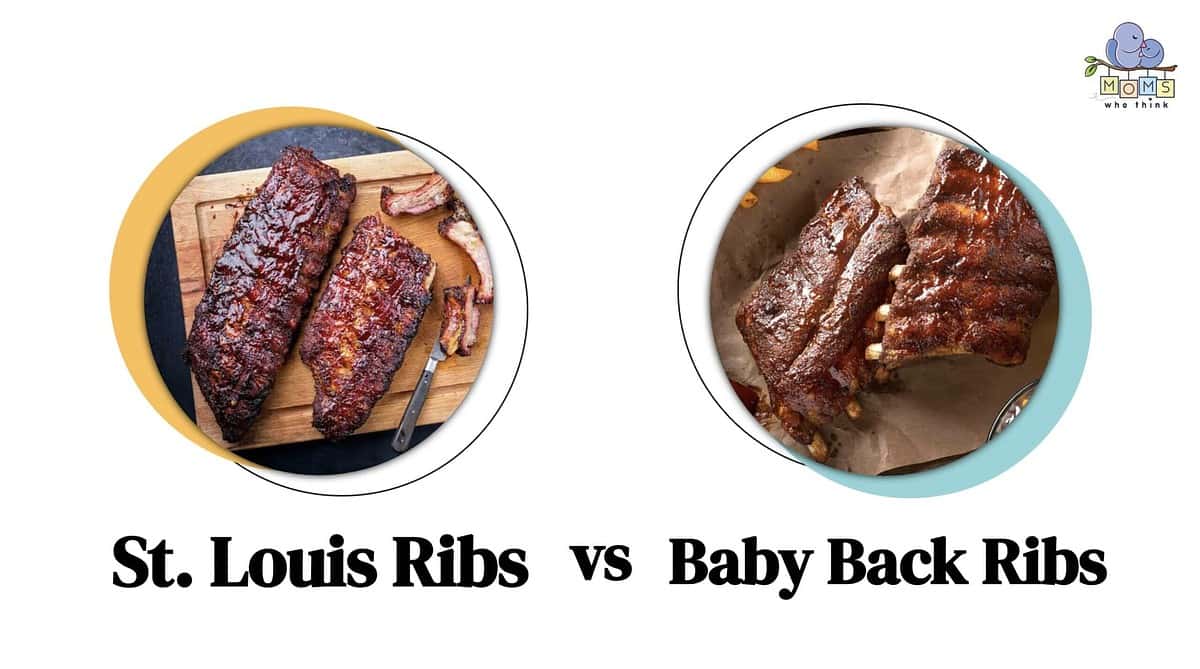
When it comes to flavor and texture, there are some differences between St. Louis Ribs and Spare Ribs. St. Louis Ribs are known for their rich, savory flavor and tenderness. The trimming process removes excess fat, resulting in a meatier and juicier bite. On the other hand, Spare Ribs have a slightly more robust and meaty flavor. They tend to have more fat and connective tissue, which contributes to their tender and succulent texture. Both cuts can be cooked to perfection, but it ultimately comes down to personal preference and the desired taste experience.
Variations In Flavor Profile Between St. Louis Ribs And Spare Ribs
St. Louis Ribs and Spare Ribs have distinct flavor profiles that set them apart. St. Louis Ribs are known for their rich, savory taste, with a balance of meatiness and juiciness. The trimming process removes excess fat, enhancing the meat’s natural flavors. On the other hand, Spare Ribs have a slightly more robust and meaty taste. The additional fat and connective tissue add a depth of flavor, resulting in a succulent and satisfying eating experience. Whether you prefer the tender and savory St. Louis Ribs or the robust and meaty Spare Ribs, both cuts offer a delicious and unique taste.
Variations In Texture And Tenderness
There are noticeable differences in the texture and tenderness of St. Louis Ribs and Spare Ribs. St. Louis Ribs are known for their tender and moist texture, with the trimming process removing excess fat and creating a more uniform thickness throughout the rib rack. This results in a more consistent cooking experience and a tender bite. On the other hand, Spare Ribs have a slightly chewier texture due to the presence of more cartilage and connective tissue. However, when cooked properly, the connective tissue breaks down, resulting in a tender and succulent eating experience. So, whether you prefer the tenderness of St. Louis Ribs or the chewier bite of Spare Ribs, both cuts offer a satisfying texture when prepared correctly.
St. Louis Ribs Vs Spare Ribs: Cooking Techniques
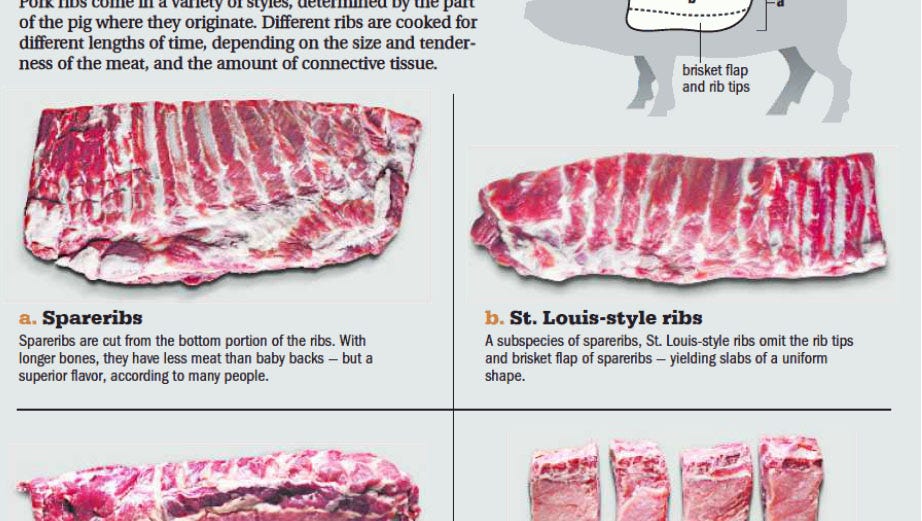
When it comes to cooking St. Louis Ribs and Spare Ribs, there are different techniques that can be used to bring out the best flavors and textures. St. Louis Ribs are often cooked using the low and slow method, such as smoking or braising, to achieve tender and juicy meat. Spare Ribs, on the other hand, can be cooked using various methods like grilling, baking, or even pressure cooking. The key is to ensure the ribs are cooked at the right temperature and for the appropriate amount of time to ensure they are cooked through and achieve the desired tenderness.
Different Cooking Techniques For St. Louis Ribs And Spare Ribs
St. Louis Ribs and Spare Ribs can both be cooked using a variety of methods to bring out their unique flavors and textures. For St. Louis Ribs, popular cooking techniques include smoking, grilling, or braising them low and slow at a temperature of around 225-250°F (107-121°C) for several hours. This method allows the ribs to become tender and juicy, with a smoky flavor. On the other hand, Spare Ribs can be cooked using similar techniques, but they can also be grilled or baked at a slightly higher temperature for a shorter period of time. No matter the method chosen, it’s important to ensure the ribs are cooked to the appropriate internal temperature to ensure they are safe to eat.
Best Practices For Tender And Flavorful Ribs
To achieve tender and flavorful ribs, it is important to follow a few best practices. Firstly, marinating the ribs overnight or applying a dry rub before cooking can enhance their taste. Secondly, using a low and slow cooking method, such as smoking or braising, allows the ribs to become tender and juicy. Basting the ribs with a flavorful sauce during cooking can add extra flavor and moisture. Lastly, letting the cooked ribs rest for a few minutes before serving helps to distribute the juices and retain their tenderness. By following these practices, you can enjoy perfectly tender and flavorful ribs every time.
Conclusion
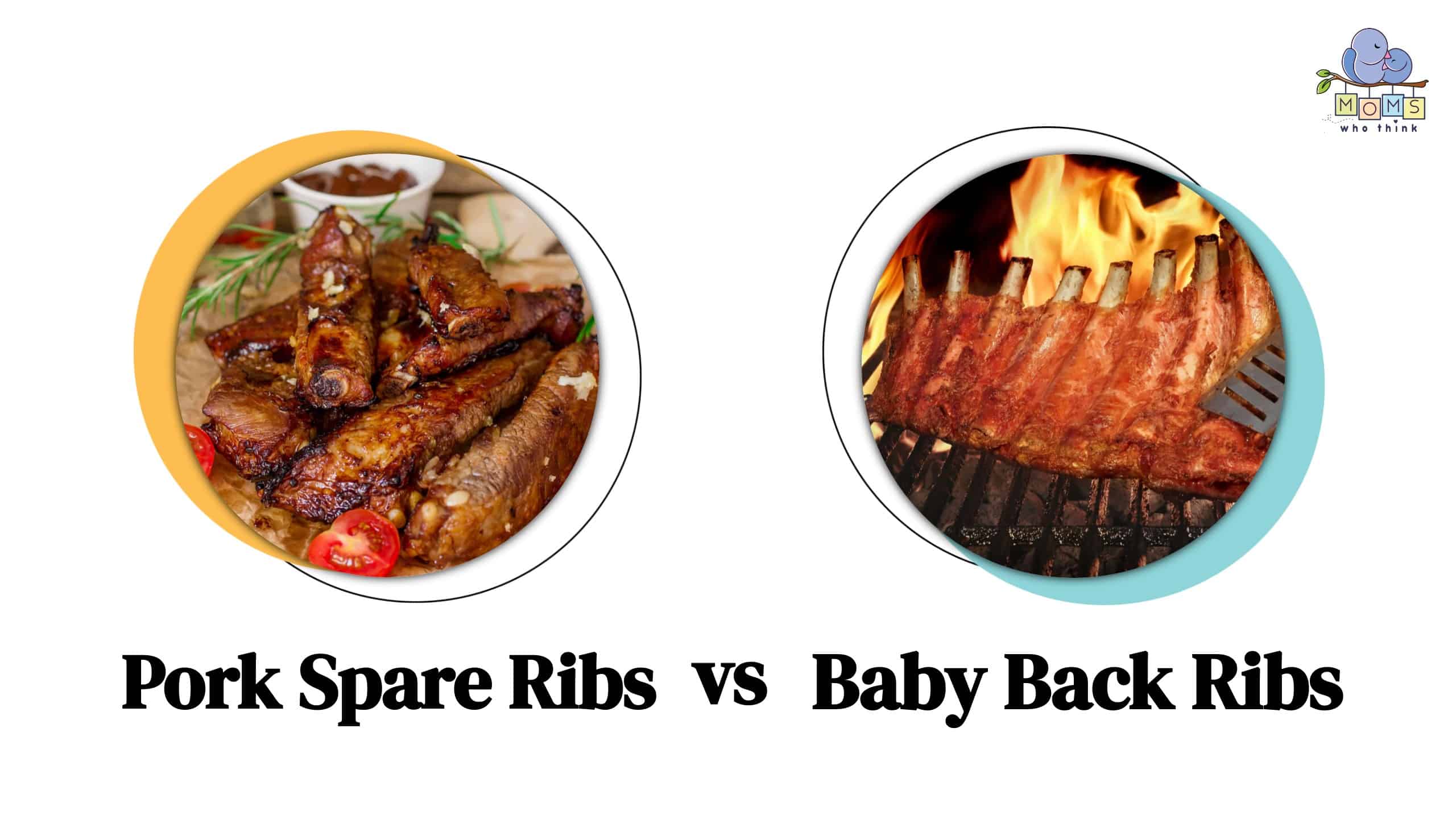
In conclusion, St. Louis Ribs and Spare Ribs are two popular cuts of pork ribs that have their own distinct characteristics. St. Louis Ribs are uniform in shape, slightly fattier, and brown more evenly due to their thinner and flatter structure. On the other hand, Spare Ribs are larger, meatier, and have a more traditional rib shape. When it comes to flavor and texture, both cuts offer delicious and tender meat. The choice between St. Louis Ribs and Spare Ribs ultimately depends on personal preference and cooking style. By understanding the differences between these cuts, you can select the right ribs for your next barbecue or meal.
Summary Of Differences Between St. Louis Ribs And Spare Ribs
St. Louis Ribs and Spare Ribs may have similarities, but there are some key differences between the two cuts. St. Louis Ribs are more uniform in shape, slightly fattier, and brown more evenly due to their thinner and flatter structure. On the other hand, Spare Ribs are larger, meatier, and have a more traditional rib shape. In terms of flavor and texture, both cuts offer delicious and tender meat. Ultimately, the choice between St. Louis Ribs and Spare Ribs depends on personal preference and cooking style. By understanding these differences, you can select the right ribs for your next meal or barbecue.
Selecting The Right Rib Cut For Your Preferences And Cooking Style
When it comes to selecting the right rib cut for your preferences and cooking style, there are a few factors to consider. If you prefer a more uniform shape with slightly fattier meat and even browning, St. Louis Ribs may be your best choice. On the other hand, if you prefer larger, meatier ribs with a traditional rib shape, Spare Ribs may be the way to go. Ultimately, it comes down to personal preference and the flavors and textures you enjoy. Experiment with both cuts to find the perfect rib experience for your taste buds.
FAQ About St. Louis Ribs Vs Spare Ribs: Comparing Rib Cuts
Q: What are St. Louis ribs and spare ribs?
A: St. Louis ribs and spare ribs are both cuts of pork ribs derived from the belly side of the pig.
Q: How do St. Louis ribs differ from spare ribs?
A: St. Louis ribs are spare ribs that have been trimmed down to a rectangular shape, removing the sternum bone, cartilage, and rib tips. Spare ribs are the full slab of ribs and include the sternum bone, cartilage, and rib tips.
Q: Which cut is meatier, St. Louis ribs or spare ribs?
A: St. Louis ribs are generally considered more meaty than spare ribs due to the trimming process that removes excess fat and cartilage, leaving behind a higher meat-to-bone ratio.
Q: Are St. Louis ribs and spare ribs cooked differently?
A: Both St. Louis ribs and spare ribs can be cooked using similar methods such as smoking, grilling, or baking. However, due to the difference in size and meatiness, cooking times may vary slightly between the two cuts.
Q: Which cut is more tender, St. Louis ribs or spare ribs?
A: St. Louis ribs are often perceived as more tender than spare ribs due to the trimming process that removes tougher cartilage and rib tips, resulting in a more uniform texture across the rack of ribs.
Q: Can St. Louis ribs and spare ribs be used interchangeably in recipes?
A: Yes, St. Louis ribs and spare ribs can usually be used interchangeably in recipes that call for pork ribs. However, due to the slight differences in size and meatiness, cooking times and methods may need to be adjusted accordingly.

Stutts House of Barbecue is a haven for BBQ enthusiasts, offering a delectable array of smoked delicacies, including ribs, beef, bologna, and chicken, accompanied by all the trimmings you could ever dream of. Our passion for perfecting the art of smoking meats shines through in every savoury bite. At Stutts House of Barbecue, we take pride in our custom smoking techniques, ensuring that each piece of meat is infused with the perfect blend of smoky flavours. But it doesn’t stop there – our homemade desserts are the cherry on top of a delicious meal, adding a sweet finish to your BBQ experience.